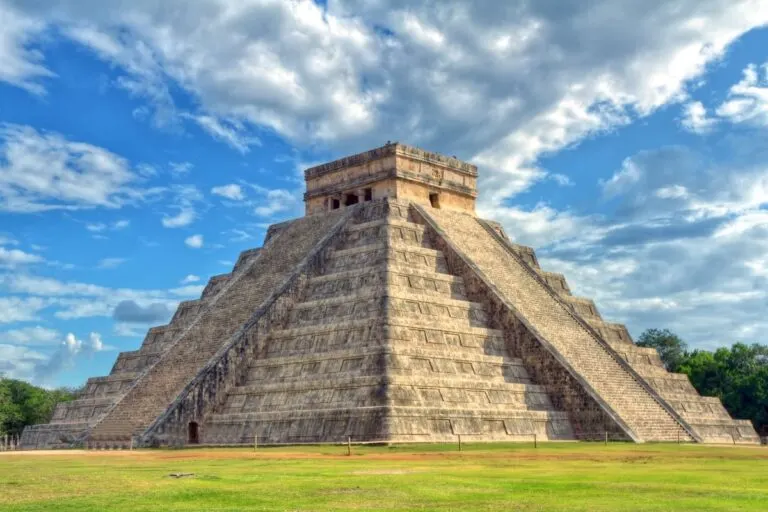Mexico is a country best known for its award-winning luxury hotels, paradisaical Caribbean beaches, and exciting nightlife, but it is also an invaluable source of culture, being littered with some of the world’s most famous ancient landmarks: the ruins of Mesoamerica.
Prior to the arrival of the Spanish and the subsequent colonization of Mexico, it was already inhabited by highly-developed societies, including the Mayans and Aztecs, that built entire cities and made technological advances we are (arguably) yet to rival in the modern era.
They are a huge draw for those keen on discovering Mexico beyond the bustling resort zones, and though there are over 200 such sites scattered around the country, three in particular seem to concentrate the greatest number of visitors:
Tulum

Tulum is the perfect example of Mexico’s unique duality: it is perhaps the most popular beach zone in Quintana Roo after Cancun, and the capital of all-inclusive sunny vacations, yet at the same time, it is home to an incredibly well-preserved archaeological zone.
The historical park comprises the surviving remnants of one of the last cities the Mayans built before their civilization declined.
The well-preserved state of the structures makes it a window into Late Mayan culture like no other archaeological zone.

The most iconic duo, the Temple of the God of Wind, which guards the entrance to the pristine bay, and the step-pyramid El Castillo, have proven instrumental in reviving cultural tourism in Tulum, largely thanks to their popularity across social media.
The signature view of Mayan temples perched on clifftops overlooking the bright-blue Caribbean have influenced over 300,000 people to take a trip to Tulum in 2023, according to INAH, the National Instittue of Anthropology and History, accounting for 12.24 of visitation figures nationwide.
Teotihuacan

Located roughly 29 miles outside Mexico City, the country’s national capital and its most metropolitan city, Teotihuacan is one of a handful of surviving monuments that date back to the period of Aztec rule, which preceded the arrival of Spaniards in the territory.
Unlike neighboring Tenochtitlan, which currently lies buried in rubbles beneath CDMX – you can thank the European settlers for that – Teotihuacan has been left (mostly) undisturbed: other than few overgrown temples, that have now been restored, it’s exactly as it was all those centuries ago.

The most impressive sights within the archaeological zone are, without question, the Pyramids of the Moon and Sun, rising 216 and 140 feet above ground, respectively, and the eerie-sounding Avenue of the Dead, where ancient sacrificial processions took place.
Mexico City is the second most popular entry point for Americans landing in Mexico currently, only beaten to the number spot by mighty Cancun, so it’s no surprise around 778,000 visitors have added a side trip to Teotihuacan in 2023.
Chichen Itza

The most emblematic of all Mexican ruins, and a Wonder of the World, Chichen Itza is indisputably the most popular archaeological site south of the border, with its landmark step pyramid towering above a centuries-old ruined city and surrounding lush vegetation.
It is well over 1,500 years old, making it one of the oldest historic settlements that we know to have existed in the Americas, and with its unspoiled Mayan cityscape, it offers a unique insight into life in pre-Hispanic Mexico.

Interestingly enough, it is the only one on this list not located within short driving distance of a major tourist destination – the nearest municipality is Valladolid – but the accessibility problem has already been remedied with the introduction of a passenger train departing from Cancun.
Throughout last year, a whopping 2.3 million tourists visited Chichen Itza, more than double Teotihuacan’s figures, and as Travel Off Path has reported, out of all Mayan ruins, resort zones, colonial towns and natural preserves, this is the most popular tourist attraction in all of Mexico.
Credit: Source link

